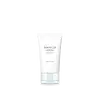What's inside
What's inside
 Key Ingredients
Key Ingredients

 Benefits
Benefits

 Concerns
Concerns

 Ingredients Side-by-side
Ingredients Side-by-side

Water
Skin ConditioningGlycerin
Humectant1,2-Hexanediol
Skin ConditioningPentaerythrityl Tetraisostearate
EmollientCaprylic/Capric Triglyceride
MaskingNiacinamide
SmoothingCetearyl Alcohol
EmollientGlyceryl Stearate
EmollientPolyglyceryl-2 Stearate
EmulsifyingButylene Glycol
HumectantCentella Asiatica Extract
CleansingStearyl Alcohol
EmollientPropanediol
SolventCarbomer
Emulsion StabilisingPolyglyceryl-3 Methylglucose Distearate
EmulsifyingSorbitol
HumectantTromethamine
BufferingPolyglyceryl-3 Distearate
EmulsifyingSedum Sarmentosum Extract
HumectantEthylhexylglycerin
Skin ConditioningCitric Acid
BufferingGlyceryl Stearate Citrate
EmollientAdenosine
Skin ConditioningMusa Sapientum Flower Extract
Skin ConditioningRosa Damascena Flower Water
MaskingDisodium EDTA
Pyrus Communis Fruit Extract
Skin ConditioningPrunus Domestica Fruit Extract
MoisturisingMelia Azadirachta Leaf Extract
Skin ConditioningMelia Azadirachta Flower Extract
Skin ConditioningBiosaccharide Gum-1
HumectantCucumis Melo Seed Extract
Skin ConditioningSodium Hyaluronate
HumectantHyaluronic Acid
HumectantHydrolyzed Hyaluronic Acid
HumectantCoccinia Indica Fruit Extract
Skin ConditioningHedera Helix Leaf/Stem Extract
AntimicrobialHydrolyzed Collagen
EmollientSolanum Melongena Fruit Extract
Skin ConditioningAdansonia Digitata Seed Extract
Skin ConditioningEquisetum Arvense Extract
AstringentOlea Europaea Leaf Extract
PerfumingVaccinium Macrocarpon Fruit Extract
AstringentFructan
Skin ConditioningSophora Japonica Flower Extract
Skin ProtectingOcimum Sanctum Leaf Extract
Skin ConditioningCurcuma Longa Root Extract
MaskingCorallina Officinalis Extract
Skin ConditioningWater, Glycerin, 1,2-Hexanediol, Pentaerythrityl Tetraisostearate, Caprylic/Capric Triglyceride, Niacinamide, Cetearyl Alcohol, Glyceryl Stearate, Polyglyceryl-2 Stearate, Butylene Glycol, Centella Asiatica Extract, Stearyl Alcohol, Propanediol, Carbomer, Polyglyceryl-3 Methylglucose Distearate, Sorbitol, Tromethamine, Polyglyceryl-3 Distearate, Sedum Sarmentosum Extract, Ethylhexylglycerin, Citric Acid, Glyceryl Stearate Citrate, Adenosine, Musa Sapientum Flower Extract, Rosa Damascena Flower Water, Disodium EDTA, Pyrus Communis Fruit Extract, Prunus Domestica Fruit Extract, Melia Azadirachta Leaf Extract, Melia Azadirachta Flower Extract, Biosaccharide Gum-1, Cucumis Melo Seed Extract, Sodium Hyaluronate, Hyaluronic Acid, Hydrolyzed Hyaluronic Acid, Coccinia Indica Fruit Extract, Hedera Helix Leaf/Stem Extract, Hydrolyzed Collagen, Solanum Melongena Fruit Extract, Adansonia Digitata Seed Extract, Equisetum Arvense Extract, Olea Europaea Leaf Extract, Vaccinium Macrocarpon Fruit Extract, Fructan, Sophora Japonica Flower Extract, Ocimum Sanctum Leaf Extract, Curcuma Longa Root Extract, Corallina Officinalis Extract
Ingredients Explained
These ingredients are found in both products.
Ingredients higher up in an ingredient list are typically present in a larger amount.
Glycerin is already naturally found in your skin. It helps moisturize and protect your skin.
A study from 2016 found glycerin to be more effective as a humectant than AHAs and hyaluronic acid.
As a humectant, it helps the skin stay hydrated by pulling moisture to your skin. The low molecular weight of glycerin allows it to pull moisture into the deeper layers of your skin.
Hydrated skin improves your skin barrier; Your skin barrier helps protect against irritants and bacteria.
Glycerin has also been found to have antimicrobial and antiviral properties. Due to these properties, glycerin is often used in wound and burn treatments.
In cosmetics, glycerin is usually derived from plants such as soybean or palm. However, it can also be sourced from animals, such as tallow or animal fat.
This ingredient is organic, colorless, odorless, and non-toxic.
Glycerin is the name for this ingredient in American English. British English uses Glycerol/Glycerine.
Learn more about GlycerinHydrolyzed Hyaluronic Acid is a form of hyaluronic acid. It is created by the hydrolysis of hyaluronic acid with a high molecular weight. Once created, Hydrolyzed Hyaluronic Acid has a low molecular weight.
Low molecular weight HA has been shown to hydrate and increase elasticity of the skin. Increasing elasticity is also associated with reduction of wrinkle depth.
One study found topical low molecular weight hyaluronic acid may be considered for the treatment of rosacea in the adult population. However, we always recommend speaking with a professional about your skin concerns.
Hyaluronic acids are a humectant. This means they draw moisture from the air. Hyaluronic acids help moisturize, soothe, and protect the skin.
Read more about other common forms of hyaluronic acid:
Learn more about Hydrolyzed Hyaluronic AcidSodium Hyaluronate is hyaluronic acid's salt form. It is commonly derived from the sodium salt of hyaluronic acid.
Like hyaluronic acid, it is great at holding water and acts as a humectant. This makes it a great skin hydrating ingredient.
Sodium Hyaluronate is naturally occurring in our bodies and is mostly found in eye fluid and joints.
These are some other common types of Hyaluronic Acid:
Learn more about Sodium HyaluronateWater. It's the most common cosmetic ingredient of all. You'll usually see it at the top of ingredient lists, meaning that it makes up the largest part of the product.
So why is it so popular? Water most often acts as a solvent - this means that it helps dissolve other ingredients into the formulation.
You'll also recognize water as that liquid we all need to stay alive. If you see this, drink a glass of water. Stay hydrated!
Learn more about Water